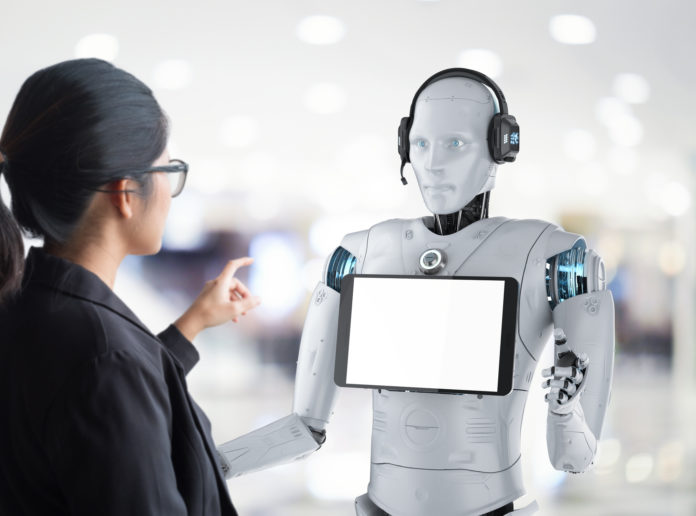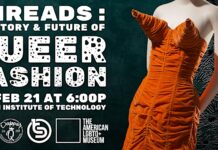
At the height of World War II, as Allied ocean convoys and Nazi German U-boats played a deadly battle of hide and seek in what we now call the Battle of the Atlantic, another invisible battle was also being fought. According to Britain’s Imperial War Museum, it was a battle of information, pitting the German military’s encryption technology, called Enigma, against a team of Allied codebreakers working from a top-secret British site called Bletchley Park.
The leading British combatant in this maximum-stakes battle of wits was mathematician Alan Turing. Born in 1912, he was still in his twenties when the war broke out in 1939, but he was already a leading figure in the emerging field of cybernetics. Several years earlier, in 1936, he outlined the principles of computer technology in a paper describing what is still called a Turing machine — a device capable of solving any computable mathematical function.
After the war, he would return to cybernetics, particularly the challenge of artificial intelligence. In this field, he devised what is probably his greatest claim to fame: the Turing test, also called the Turing game. In essence, he argued that if you can’t tell if you are talking to a machine or a person, and it turns out to be a machine, it should be regarded as intelligent.
In those post-war years, Turing was still a fairly young man and seemed positioned to be one of the world’s leading computer scientists for decades to come. But in 1950, a burglar broke into his house. In reporting the crime to police, Turing outed himself as a gay man — and sadly, the revelation tore his life apart. Two years later, Turing had died; whether by suicide or an accident is still uncertain.
The Ultimate Multipurpose Machine
As Harvard University notes, Turing made his first mark in the technology world when he published a paper in 1936 called “On Computable Numbers.” He was only 24 years old. The paper defined what is now called a Turing machine.
The paper did not go into the physical technology of the machine itself (what we would now call its hardware). Turing simply posited that the machine could read both data and instructions from a tape and print its results onto the same tape. What he showed in the paper was that if a mathematical problem could be solved at all, the machine he outlined would be able to solve it.
As the New Yorker notes, a Turing machine was not specialized for any one specific use but was a general-purpose machine, able to do whatever it was programmed to do.
The Turing machine itself was not a practical device, but it clearly outlined — for the first time — the essential elements of a digital computer: a memory bank that could store both data and program code, input-output devices to read from and write to memory, and the processor to do the actual number crunching.
Artificial Intelligence and the Turing Game
Three years after Turing’s pioneering paper, Britain was at war. Alan Turing soon became a key member of the Bletchley Park codebreaking team, designing a series of devices called “bombe” that were used to crack German Enigma transmissions, as the Imperial War Museum reports. This work remained secret for decades, until long after Turing’s death. Much of it was not revealed until the 1990s.
For Alan Turing, the decryption process was something of an intellectual game, but it was also a distraction from his real work. As the war wound down, he took up the problem of artificial intelligence. In Turing’s view, asking what intelligence “is” was the wrong question. Instead he asked, what does intelligence do?
This insight led him to posit the Turing game. Like the earlier Turing machine, it was deceptively simple. One thing intelligence can do is sound pretty smart. So, as the New Yorker notes, Turing imagined a machine communicating with a human via teletype — the 1940s equivalent of a screen and keyboard. As Turing argued, if the human cannot decide whether they are talking to a machine or another person, it is effectively as smart as we are.
Turing’s wartime work remained secret for decades, while the Turing machine concept remained largely the preserve of computer scientists. But the Turing game introduced Alan Turing’s work to the popular culture, where it was further popularized by the 2014 movie The Imitation Game. In the Internet era, the entire world has arguably been playing a vast Turing game — but so far, no popular Twitter user has revealed itself as a machine.
Crime and Victimization
Two generations before the film, Alan Turing’s life was shattered by a collision with the limitations of human intelligence — limitations rooted in prejudice and sheer mental laziness.
During this era, in Britain’s class-bound society, Turing had been able to live in his own social circle as an informally “out” gay man. But then, a friend of the man Turing had struck up a relationship with burglarized the mathematician’s home, according to Harvard. When Turing reported the crime to police, he exposed his personal life to official inquiry and ended up himself charged with what was then a crime: homosexuality.
To avoid going to prison, Turing accepted what then passed for scientific treatment of the supposed affliction of loving the wrong person; he was subjected to “chemical castration” in the form of estrogen injections, Harvard notes.
Two years later, Alan Turing was found dead after eating an apple laced with cyanide. The official ruling was suicide, but according to Mental Floss, doubts remain. Friends said he was in good spirits in the days before his death, and a to-do list was found on his desk. The apple was never tested for cyanide, and he had a penchant for self-experimentation, often careless of safety practices.
Suicide or accident? The answer will almost surely never be known (and of course, there are also the inevitable conspiracy theories). The only things we can say for certain are that his life ended much too early, after being torn apart by prejudice and superstition. And, that life has just as much to tell us about the nature of intelligence as it does about the tragic consequences of human intolerance.
Are you interested in all things related to technology? We are, too. Check out Northrop Grumman career opportunities to see how you can participate in this fascinating time of discovery.








